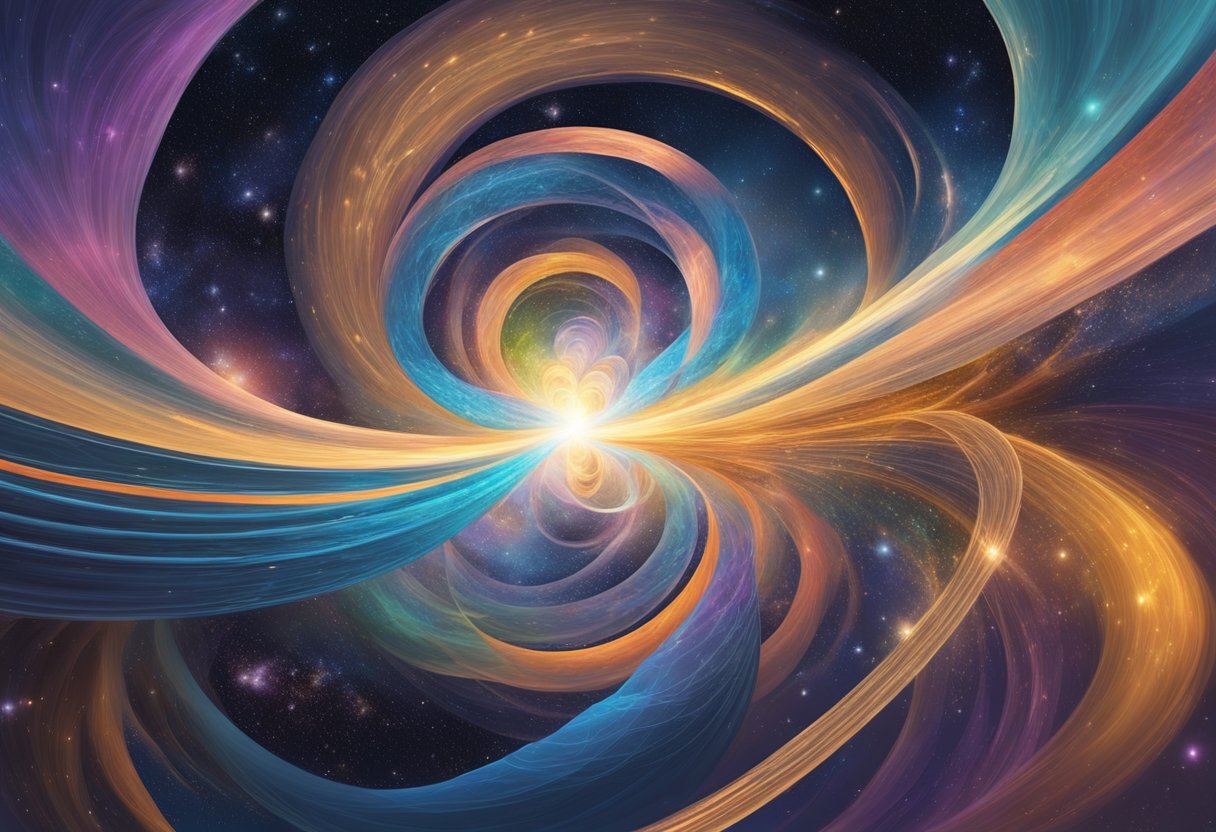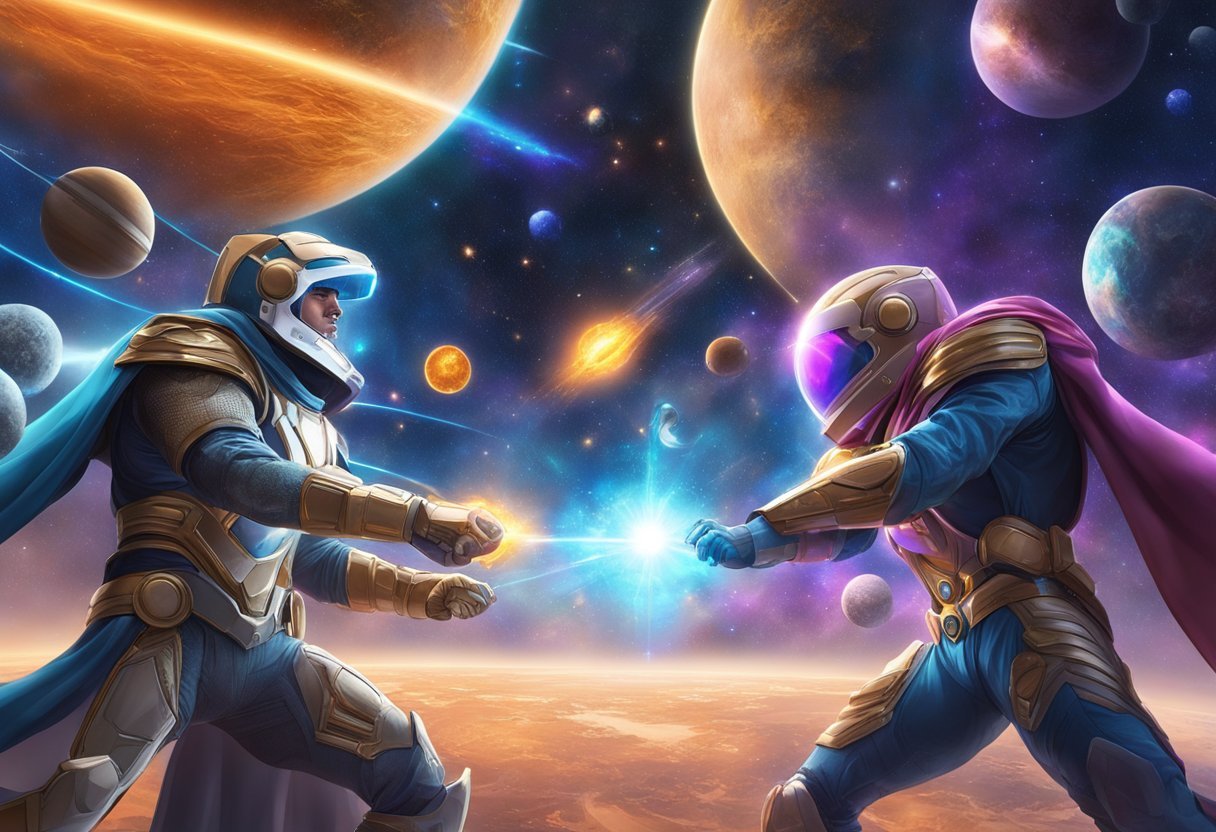Multiverse theory is a concept in physics and cosmology that suggests the existence of multiple universes, including our own. According to this theory, our universe is just one of many parallel universes that exist simultaneously, each with its own set of physical laws and conditions. This idea has been explored in science fiction for decades, but it is also a topic of serious scientific research.
The concept of the multiverse emerged from the study of quantum mechanics and the theory of relativity. These two fields of physics have revealed that the universe is far more complex and mysterious than we previously thought. Multiverse theory is one possible explanation for the strange and seemingly contradictory behavior of subatomic particles, as well as the apparent fine-tuning of the universe that allows life to exist.
While the idea of multiple universes may seem far-fetched, it is supported by a growing body of scientific evidence. Researchers are using advanced telescopes and other tools to search for signs of other universes, and they are also exploring the implications of the multiverse for our understanding of physics, cosmology, and the nature of reality itself.
Conceptual Overview of Multiverse Theory
Multiverse theory is a concept that suggests the existence of multiple universes, including our own. The idea of a multiverse has been around for centuries, but it was not until the 20th century that it gained scientific credibility. The concept of a multiverse was first introduced by the physicist Hugh Everett in 1957. However, it was Max Tegmark who popularized the concept in the late 1990s and early 2000s.
The multiverse theory suggests that there are multiple parallel universes, each with its own set of physical laws and properties. These universes may be similar or vastly different from our own. The concept of a multiverse emerged as a possible solution to the fine-tuning problem, which refers to the fact that the physical constants and laws of our universe are perfectly suited for life to exist.
Types of Multiverses
There are several types of multiverses, each with its own unique properties.
The first type is the Level I multiverse, also known as the “cosmic inflation” multiverse. This type of multiverse is based on the idea of cosmic inflation, which suggests that the universe underwent a rapid expansion in the moments following the Big Bang. According to this theory, the universe expanded so rapidly that it created multiple “bubble” universes, each with its own set of physical laws and properties.
The second type is the Level II multiverse, also known as the “many-worlds” multiverse. This type of multiverse is based on the idea that every possible outcome of every quantum event actually occurs in a separate universe. In other words, every time a quantum event occurs, the universe splits into multiple parallel universes, each with its own unique outcome.
The third type is the Level III multiverse, also known as the “many-minds” multiverse. This type of multiverse is based on the idea that every possible outcome of every quantum event occurs in a separate universe, but instead of creating new universes, the universe splits into multiple versions of the same person’s mind.
The concept of a multiverse is a fascinating and complex topic that continues to be explored by scientists and philosophers alike. While there is still much to learn about the nature of the multiverse, it is clear that it has the potential to revolutionize our understanding of the universe and our place within it.
Historical Development
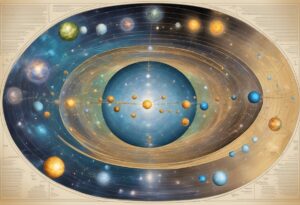
The concept of a multiverse has been around for centuries, and it has been explored by numerous scientists and philosophers. Over the years, the theory has evolved and developed, with new discoveries and advances in science contributing to its growth.
Early Theoretical Foundations
The idea of a multiverse can be traced back to ancient Greek philosophy. The concept of an infinite universe was first proposed by Anaximander, who believed that the universe was infinite and that there were multiple worlds within it. Later, the philosopher Democritus suggested that there were an infinite number of universes, each with its own set of physical laws.
In the 20th century, the theory of the multiverse gained traction in scientific circles. The Big Bang theory, which suggests that the universe began as a singularity and expanded rapidly, provided a possible explanation for the existence of multiple universes. The development of quantum mechanics led to the idea of a Many-Worlds interpretation, which posits that every possible outcome of a quantum event exists in a separate universe.
Contemporary Advances
In recent years, the theory of the multiverse has gained even more attention thanks to advances in inflation theory and string theory. Inflation theory suggests that the universe underwent a period of rapid expansion in the moments after the Big Bang, which could have resulted in the creation of multiple universes. String theory, on the other hand, proposes that the universe is made up of tiny, vibrating strings that exist in multiple dimensions. This theory suggests that there could be as many as 11 dimensions, which could allow for multiple universes to exist.
One of the most significant contributors to the development of the multiverse theory was the physicist Hugh Everett. In the 1950s, Everett proposed the Many-Worlds interpretation of quantum mechanics, which suggested that every possible outcome of a quantum event exists in its own separate universe. While this theory was initially met with skepticism, it has since gained widespread acceptance among physicists and cosmologists.
The theory of the multiverse continues to be a topic of debate and discussion among scientists and philosophers. While there is still much that is not known about the universe and its origins, the concept of a multiverse offers a compelling explanation for the existence of multiple universes.
Cosmological Inflation and the Multiverse
Cosmological inflation is a theory of exponential expansion of the universe during its early moments. This epoch is believed to have lasted from 10^-36 seconds to between 10^-33 and 10^-32 seconds after the Big Bang. The theory of cosmological inflation is used to explain some of the observed features of the universe, such as its large-scale homogeneity, isotropy, and flatness.
Eternal Inflation
Eternal inflation is a version of the inflationary theory that suggests that inflation may not have stopped in all parts of the universe. According to this theory, the universe is constantly expanding and creating new universes. This is because inflation is driven by a scalar field that can take on different values in different regions of space. In some regions, the scalar field may still be in a state of inflation, leading to the creation of new universes.
The theory of eternal inflation was proposed by Andrei Linde and has been used to explain the existence of a multiverse. According to this theory, our universe is just one of many universes that exist in a larger multiverse. Each universe in the multiverse may have different physical laws and constants, leading to a wide range of possible outcomes.
Bubble Universe Theory
Bubble universe theory is another version of the multiverse theory that suggests that our universe is just one of many bubble universes that exist in a larger multiverse. According to this theory, each bubble universe is created by a process called cosmic inflation. During this process, a scalar field causes a region of space to undergo exponential expansion, creating a bubble universe.
The bubble universe theory suggests that our universe is just one of many possible outcomes of cosmic inflation. Each bubble universe may have different physical laws and constants, leading to a wide range of possible outcomes. The theory of bubble universes has been used to explain some of the observed features of the cosmic microwave background, such as its temperature fluctuations and large-scale structure.
The theories of eternal inflation and bubble universe provide possible explanations for the existence of a multiverse. These theories are based on the concept of cosmic inflation, which is a theory of exponential expansion of the universe during its early moments. The existence of a multiverse is still a matter of debate among scientists, but the theories of eternal inflation and bubble universe provide a possible framework for understanding the universe.
Scientific Evidence and Observations
Cosmic Microwave Background Radiation
One of the most significant pieces of evidence for the multiverse theory is the existence of cosmic microwave background radiation. This radiation is the afterglow of the Big Bang and is present throughout the universe. Scientists have observed that this radiation is uniform in all directions, which suggests that the universe is isotropic and homogeneous. However, there are small variations in the temperature of the radiation, which indicates the presence of small fluctuations in the early universe.
These fluctuations could be explained by the inflationary theory, which suggests that the universe underwent a rapid expansion shortly after the Big Bang. According to this theory, the universe expanded faster than the speed of light, which resulted in the creation of multiple universes. The fluctuations in the cosmic microwave background radiation could be the result of interactions between these universes.
Quantum Mechanics Implications
Another line of evidence for the multiverse theory comes from the implications of quantum mechanics. According to this theory, particles can exist in multiple states simultaneously until they are observed, at which point they collapse into a single state. This suggests that there could be an infinite number of parallel universes, each with its own version of reality.
While some scientists are skeptical of the multiverse theory, others argue that it is a scientifically rigorous and testable idea. For example, some researchers are looking for evidence of the multiverse in the cosmic microwave background radiation or in the behavior of particle accelerators. However, others argue that the theory is untestable and therefore not a valid scientific theory.
The multiverse theory remains a topic of debate among scientists. While there is some evidence to support the idea, there is also much that is still unknown. Nevertheless, the theory provides a fascinating glimpse into the mysteries of the universe and the nature of reality.
The Role of String Theory
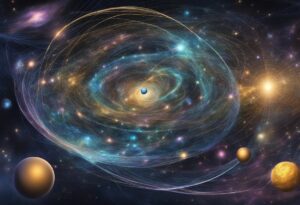
Landscape of String Theory
String theory is a scientific theory that describes how particles propagate through space and interact with each other. It proposes that the fundamental building blocks of the universe are not point-like particles, but rather one-dimensional objects called strings. These strings vibrate at different frequencies, giving rise to the different particles that we observe.
Furthermore, string theory predicts that there are additional dimensions beyond the three spatial dimensions and one temporal dimension that we experience in our everyday lives. These extra dimensions are compactified or “curled up” and are too small for us to observe directly. The landscape of string theory includes a vast number of possible compactifications, each corresponding to a different physical universe.
Implications for Multiple Universes
One of the most intriguing implications of string theory is the possibility of multiple universes. In string theory, the multiverse is a theory in which our universe is not the only one; many universes exist parallel to each other. These distinct universes within the multiverse theory are called parallel universes. A variety of different theories lend themselves to a multiverse viewpoint.
The landscape of string theory allows for the possibility of a vast number of different universes with different physical properties. The idea is that each of these universes corresponds to a different compactification of the extra dimensions in string theory. In this way, string theory provides a framework for understanding the existence of multiple universes.
String theory provides a fascinating framework for understanding the fundamental structure of the universe. Its landscape includes a vast number of possible compactifications, each corresponding to a different physical universe. The possibility of multiple universes arises naturally in string theory, making it an important area of study in modern physics.
Philosophical and Theoretical Implications
Many Worlds Interpretation
The Many Worlds Interpretation of quantum mechanics is a popular interpretation that posits the existence of multiple parallel universes. According to this interpretation, every time a quantum event occurs, the universe splits into many parallel universes, each with a different outcome. This interpretation is often used to explain the apparent randomness and unpredictability of quantum mechanics.
The Many Worlds Interpretation has significant philosophical implications. It suggests that every possible outcome of a quantum event actually occurs in some universe. This leads to the conclusion that there are infinite versions of ourselves, each living in a different universe. This idea raises questions about the nature of identity and the self, and the possibility of communicating or interacting with other versions of oneself.
Anthropic Principle and Fine-Tuning
The Anthropic Principle is the idea that the universe must be compatible with the existence of intelligent life because we are here to observe it. The Fine-Tuning argument is a specific version of the Anthropic Principle that suggests that the laws of nature must be finely tuned in order for intelligent life to exist.
Multiverse theory provides a possible solution to the Fine-Tuning argument. If there are multiple universes with different laws of nature, then it is not surprising that we find ourselves in a universe that is compatible with life. However, this solution raises new questions about the nature of existence and the role of chance in the universe.
Multiverse theory has significant philosophical and theoretical implications. It challenges our understanding of identity, the self, and the nature of existence. It also provides new solutions to long-standing philosophical problems, such as the Fine-Tuning argument. However, it also raises new questions about the role of chance in the universe and the possibility of communicating with other versions of ourselves.
Challenges and Criticisms
Scientific Critique
Multiverse theory is a fascinating concept that has been explored by many scientists and cosmologists. However, it has also faced significant scientific criticism. One of the main criticisms of the multiverse theory is that it lacks empirical evidence. Since it is impossible to observe other universes, the theory remains purely speculative and untestable.
Another scientific critique of the multiverse theory is that it violates Occam’s Razor, which states that the simplest explanation is often the best. The multiverse theory is incredibly complex and requires the existence of an infinite number of universes, each with their own unique physical laws and constants. This complexity makes the theory difficult to test and verify, which further undermines its scientific validity.
Philosophical Objections
In addition to scientific critiques, multiverse theory has also faced philosophical objections. One of the main philosophical objections to the theory is that it is overly speculative and lacks any real explanatory power. While the theory may be fascinating, it does not provide any real insight into the nature of the universe or our place within it.
Another philosophical objection to the theory is that it raises questions about the nature of reality itself. If there are an infinite number of universes, each with their own unique physical laws and constants, then what does it mean for something to be “real” or “true”? This philosophical conundrum has yet to be fully resolved and remains a significant challenge to the multiverse theory.
Despite these challenges and criticisms, multiverse theory remains an intriguing and thought-provoking area of study. While it may not be scientifically or philosophically perfect, it continues to inspire new ideas and theories about the nature of our universe and our place within it.
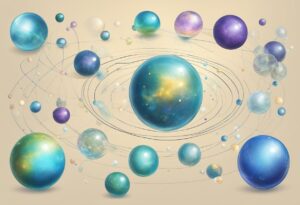
Future Directions in Multiverse Research
Theoretical Advances
Multiverse theories have been an active area of research in cosmology and theoretical physics for decades. As the scientific theory of multiverse continues to evolve, there are several theoretical advances that researchers are currently exploring to further our understanding of the multiverse.
One of the most promising theoretical advances is the development of the string theory landscape. This theory proposes that our universe is just one of many possible universes that exist in a vast landscape of possibilities. While the string theory landscape is still in its early stages of development, it has the potential to provide a framework for understanding the nature of the multiverse.
Another area of theoretical research is the study of the eternal inflation scenario. This scenario suggests that the universe is constantly expanding, and that this expansion is driven by a force known as dark energy. As the universe expands, it creates pockets of space where new universes can form. Understanding the nature of eternal inflation is critical to developing a comprehensive theory of the multiverse.
Experimental Approaches
While much of the research on the multiverse is theoretical, there are also experimental approaches that researchers are exploring to test the validity of multiverse theories. One approach involves studying the cosmic microwave background radiation (CMB), which is the afterglow of the Big Bang. By analyzing the CMB, researchers can look for evidence of other universes that may have collided with our own.
Another experimental approach involves studying the behavior of subatomic particles. Quantum mechanics suggests that particles can exist in multiple states at the same time, and that these states are determined by random chance. If the multiverse theory is correct, then there should be an infinite number of universes in which particles exist in different states. By studying the behavior of particles, researchers can look for evidence of these other universes.
The scientific theory of multiverse is a fascinating area of research that continues to evolve as new theoretical and experimental approaches are explored. While there is still much to learn about the nature of the multiverse, the advancements made in recent years have brought us closer to understanding the true nature of our existence.
Frequently Asked Questions
What are the rules of the multiverse theory?
The multiverse theory is a scientific model that suggests the existence of multiple universes beyond our own. According to this theory, each universe may have different physical laws and properties that govern it, making it unique. The theory suggests that these universes exist simultaneously and independently of each other, and that they may interact with each other in ways that are beyond our current understanding.
What is the multiverse time theory?
The multiverse time theory is a concept that suggests that time may be different in different universes. According to this theory, time may move faster or slower in different universes, or it may not exist at all. This theory suggests that time is not a fixed or constant concept, but rather a relative one that is dependent on the observer’s position in the universe.
What is the logic of multiverse theory?
The logic of multiverse theory is based on the idea that the universe is infinite and that there may be an infinite number of universes that exist beyond our own. This theory is supported by mathematical models and scientific observations that suggest the existence of parallel universes. The logic of multiverse theory suggests that there may be an infinite number of possibilities and outcomes for every decision that is made, and that each of these possibilities may exist in a different universe.
Do we exist in multiple dimensions?
According to the multiverse theory, it is possible that we exist in multiple dimensions. These dimensions may exist beyond our current understanding of space and time, and they may interact with each other in ways that are beyond our current understanding. While there is no direct evidence to support the existence of multiple dimensions, the multiverse theory suggests that they may exist.
Are we living in 3D or 4D?
We are currently living in a 3D world. Our perception of the world is based on three dimensions: length, width, and height. However, according to the multiverse theory, it is possible that there may be other dimensions that exist beyond our current understanding of space and time.
Are we in the 4th dimension?
We are not currently in the 4th dimension. The 4th dimension is often described as time, and it is a concept that is used to explain the movement of objects through space. While time is an important aspect of our understanding of the universe, it is not considered a separate dimension in the same way that length, width, and height are.
What would the 5th dimension look like?
The 5th dimension is a concept that is often used in science fiction and popular culture. While there is no direct evidence to support the existence of a 5th dimension, some scientists suggest that it may be a higher level of consciousness or a realm of pure energy. Others suggest that it may be a dimension that is beyond our current understanding of space and time.
What does the Bible say about the fourth dimension?
The Bible does not directly reference the concept of the fourth dimension. However, some scholars suggest that the concept of time in the Bible may be related to the concept of the fourth dimension. The Bible suggests that time is a finite concept that is dependent on the observer’s position in the universe.
What dimension are we currently living in?
We are currently living in a 3D world. Our perception of the world is based on three dimensions: length, width, and height. However, according to the multiverse theory, it is possible that there may be other dimensions that exist beyond our current understanding of space and time.

